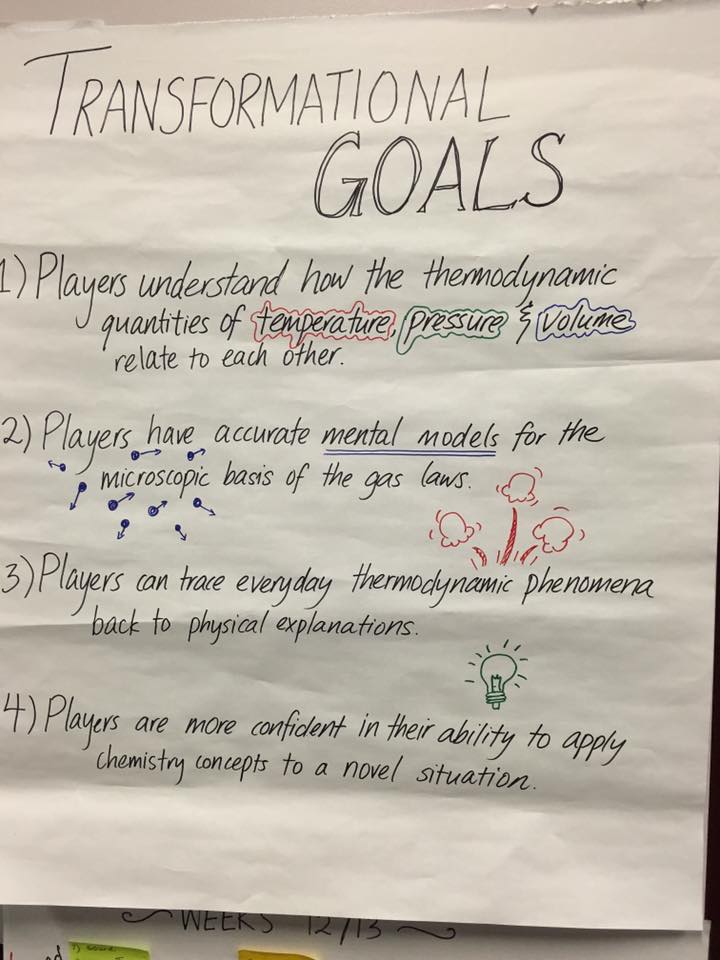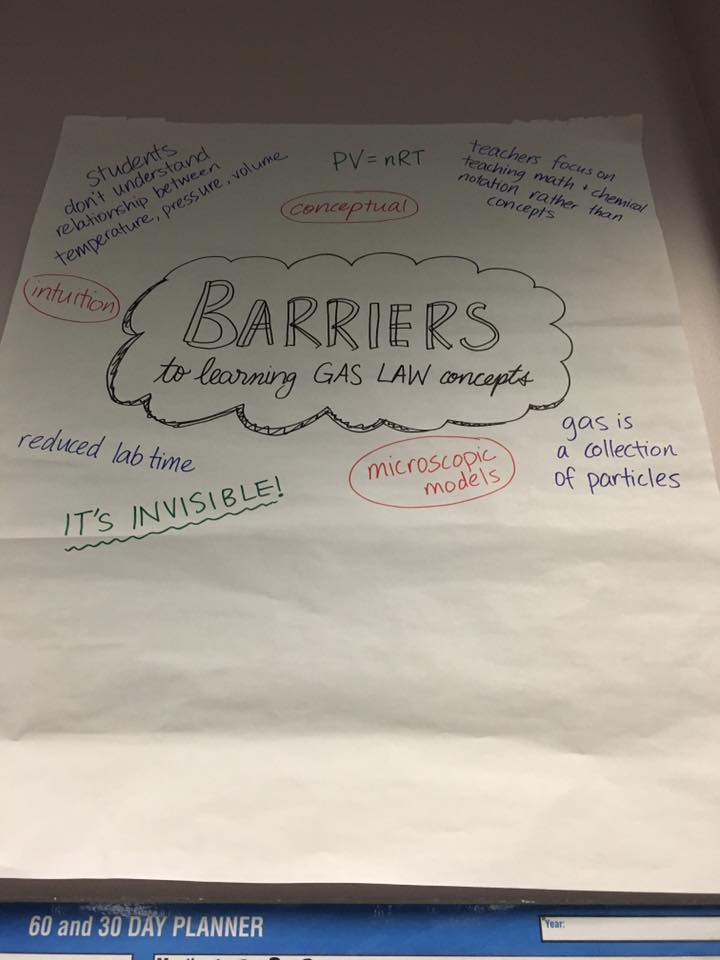ART
- This week went into exploring new Art/Design softwares like: Cinema 4d and X-particles plugin.
- Made Poster, Logo, Half Sheet.
DESIGN
- This week, I continued to apply Schell Game’s transformational field guide to our project. This resulted in the creation of a set of transformational goals and the primary barriers for players reaching those goals. Using the goals/barriers as a guide, I designed several game mechanics that would move players towards our goals while addressing key misunderstandings. On Thursday we brought our goals, barriers, and mechanics to Jesse to get feedback. He feels the design is going in a good direction and gave us further notes/resources that I will be incorporating in the coming week. I’m beginning to put together a list of questions for teachers that will give us information about problems they are having teaching the gas laws as well as the place of technology in their classrooms. Next week I will be finalizing this list and sending it to the teachers who have already agreed to answer the questions on it. In anticipation of our physics engine coming online for my use, next week I will sketch out several levels so that I can dive straight into the editor once it is ready.


PROGRAMMING
- This week, I worked with Julian to solidify some of our design ideas into a few prototypes that I could develop. I looked for common features between the prototypes, such as particle motion, heat transfer and possible state change that I could test out in Unity. I decided on the Unity Asset Server for version control and had it set up. Then, I began working on two prototypes that contain elements of our game design: One to explore particle motion and heat transfer and another side-scrolling platformer to test our Alchemist’s “abilities”. By developing some of these features I gain a better understanding of what our physics engine should be capable of. One of my goals is to keep the codebase modular. I have been working on code layouts and studying design patterns with the aim to de-couple the architecture as much as possible. The ultimate goal is to have a tool that Julian can use to drag and drop physics engine components into the scene and have them scriptable and functional.
PRODUCTION
- This week, the team was in contact with Mike Christel who kindly offered to bring our information to teachers at the STEAM showcase. We don’t have any new leads from the event yet, so I am planning to reach out to other sources. We also had a design meeting with Jesse Schell to go over some initial concepts for the first prototype. Jesse seemed enthusiastic about our ideas and gave us some good feedback, an example maths game and a book full of interesting puzzles that I am enjoying looking through when I need a break from work. In a discussion with the team, we have decided to create 3 vastly different prototypes to test and evaluate before quarters, when we will decide on a direction based on these prototypes. Overall, I’m feeling a little disorganised but I hope that daily standups with the team, starting next week, will help bring some clarity and transparency to what everyone is working on, make us more aware of our progress and obstacles and keep us on the same page. Although I had hoped to have JIRA and the website set up, there were delays and we only got login information late in the week so this will have to take place early next week. Next week, I also hope to be in contact with teachers for upcoming meetings and playtests, which I anticipate being tricky since the school term has started.
